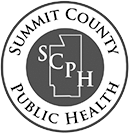D.U.M.P. Box Locations
The following D.U.M.P. box locations are permanent and accessible seven days a week:
Akron City Police Department
217 South High St., Akron, OH 44308
Barberton City Police Department
576 W Park Ave., Barberton, OH 44203
Bath Township Police Department
3864 W. Bath Rd., Akron, OH 44333
Copley Police Department
1280 Sunset Dr., Copley, OH 44321
Cuyahoga Falls Police Department
2310 Second St., Cuyahoga Falls, OH 44221
Green - Sheriff Training Center
2825 Greensburg Rd., North Canton, OH 44720
Hudson Police Department
36 South Oviatt St., Hudson, OH 44236
Lakemore Police Department
1400 Main St., Suite B, Lakemore, OH 44250
Macedonia Police Department
9691 Valley View Rd., Macedonia, Ohio 44056
Munroe Falls Police Department
43 Munroe Falls Ave., Munroe Falls, OH 44262
New Franklin Police Department
5611 Manchester Rd., Akron, Oh 44319
Norton Fire Department
3380 Greenwich Rd., Norton, OH 44203
Richfield Police Department
4450 W. Streetsboro Rd., Richfield, Oh 44286
Springfield Township Police Department
2465 Canfield Rd., Akron, OH 443012
Stow Police Department
3800 Darrow Rd., Stow, OH 44224
Summa Health System - Akron Campus
525 E. Market St., Akron, OH 44304
Emergency Dept. Atrium (Corner of Forge and Fountain)
Summa Health System - Barberton Campus
155 5th St. NE, Barberton, OH 44203
Emergency Dept. Atrium (Corner of 5th and E. Tuscarawas)
Summa Health System - Green Campus
825 Franks Pwky., Uniontown, OH 44685
Tallmadge Police Department
53 Northeast Ave., Tallmadge, Oh 44278
Twinsburg Police Department
10075 Ravenna Rd., Twinsburg, OH 44087
Akron Children's Hospital**
Main Campus - 214 W. Bowery St., Akron, OH 44302
Considine Bldg. - 215 W. Bowery St., Akron, OH 44302
**These locations are not managed by SCPH.
Updated Nov. 3, 2023
